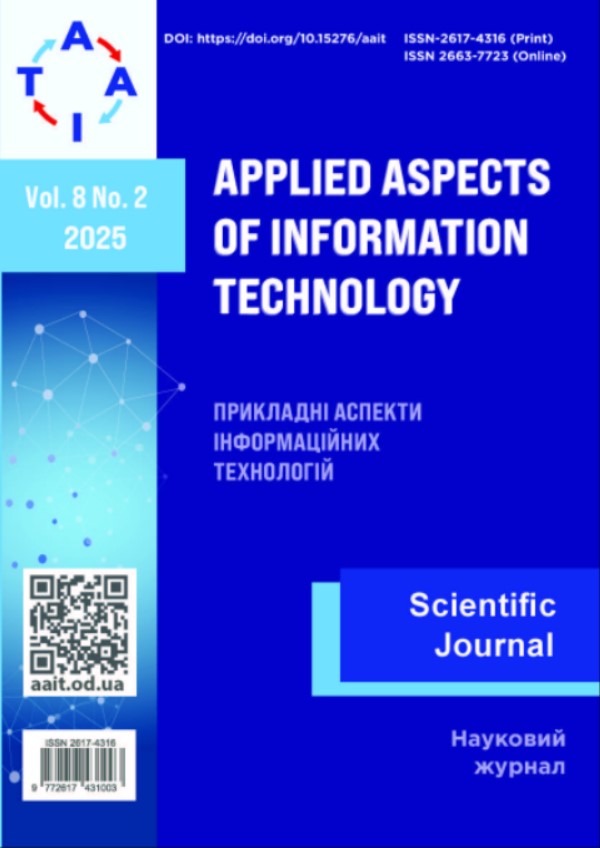Generalization of the method for constructing GL-models of complex fault-tolerant multiprocessor systems with additional failure conditions
Main Article Content
Abstract
The article is devoted to methods for constructing GL-models of fault-tolerant multiprocessor systems. GL-models can be used as behavioral models of such systems under failure flows to evaluate their reliability metrics through statistical experiments. The study considers two types of systems: consecutive two-dimensional systems and mixed-type systems. A consecutive two-dimensional system is defined as one in which components are arranged in the form of a rectangular matrix, and the system fails when a rectangular block of a certain size appears, consisting entirely of failed components. A mixed-type system fails if at least one of the following conditions is met: a specified number of arbitrary components have failed; a specified number of consecutive components have failed; or a rectangular block of a certain size, consisting entirely of failed components, appears within the component matrix. Currently, there are no formalized methods for constructing GL-models for the aforementioned types of systems. The objective of this work is to develop a universal method for constructing GL-models for both consecutive two-dimensional systems and mixed-type systems. It is shown that, to construct a GL-model for such a system, it is sufficient to determine the maximum number of failed components under which the system remains operational. Based on this threshold, a basic system model is constructed without considering additional failure conditions. Then, all combinations of component failures that lead to system failure are identified. The basic model is subsequently weakened at the vectors corresponding to these critical failure combinations. This paper presents, for the first time, an algorithm for constructing GL-models for consecutive two-dimensional systems and mixed-type systems. In addition, it introduces methods for calculating the maximum allowable number of component failures under which the system remains functional, as well as estimating the total number of failure combinations that result in system failure. Experimental results confirm that the proposed models adequately represent the real behavior of such systems under failure flows. Examples are provided to illustrate the GL-model construction process for both of the aforementioned system types.



